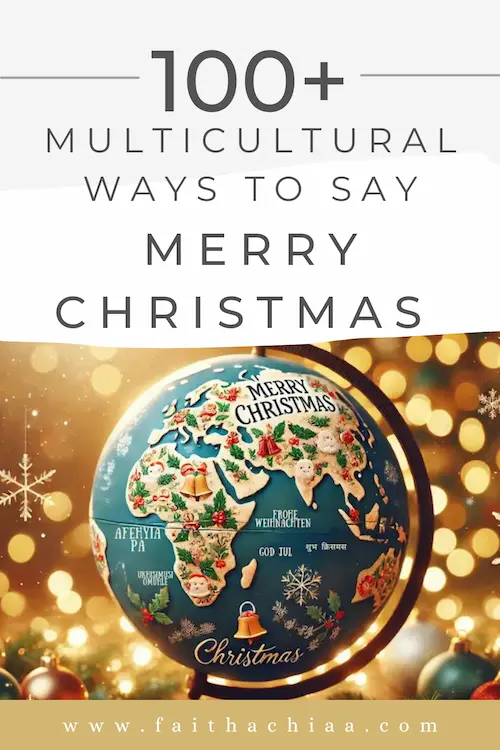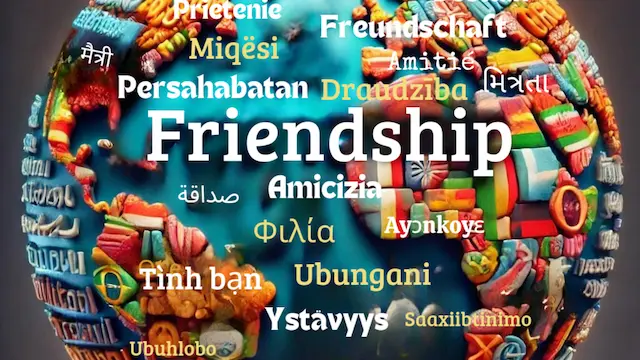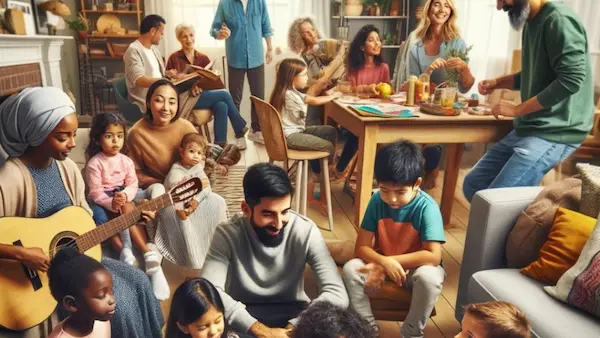108 Ways to Say Merry Christmas: Learn Global Greetings and Spread Joy

THIS POST MAY CONTAIN AFFILIATE LINKS. THIS MEANS I MAY RECEIVE A COMMISSION FROM QUALIFYING PURCHASES YOU MAKE THROUGH MY LINKS. KINDLY READ MY DISCLOSURE NOTICE FOR MORE INFORMATION.
Every December, people around the world share the joy of Christmas through a simple yet powerful phrase: “Merry Christmas.”
The words may differ from language to language, but the spirit remains universal. Whether it’s “Afehyia Pa” in Akan (Twi) or “Frohe Weihnachten” in German, these greetings connect us through shared values of joy, peace, hope, and love.
This season invites us to honor our own traditions while celebrating the diverse ways people express holiday cheer globally.
In this post, you’ll discover how to say “Merry Christmas” in over 100 languages, helping you share the festive spirit with friends and strangers across the world.

The Power of “Merry Christmas” to Unite Cultures
Christmas is more than just a holiday – it’s a time that brings people together, regardless of where they come from or what language they speak.
The phrase “Merry Christmas” serves as a universal bridge, creating meaningful connections across cultures.
This simple greeting carries the values of joy, love, peace, and hope, uniting people in the spirit of the season.
Transcending Borders and Languages
Think about it: How many times have you heard “Merry Christmas” in a language different from your own, yet understood its meaning perfectly?
This universal greeting creates a bond between people, even if their backgrounds and traditions are miles apart.
Shared Joy
The joy of hearing or saying “Merry Christmas” is something everyone can relate to.
Whether it’s in English, Spanish, or Mandarin, Yoruba the warmth in this greeting breaks through language barriers and spreads happiness.
Cultural Exchange
When someone wishes you “Merry Christmas” in their native tongue, they’re sharing a part of their culture with you.
This moment of exchange brings both people closer, allowing for a deeper appreciation of each other's traditions.
Unity in Diversity
Though we may celebrate in different ways, the core emotions of happiness, love, and hope remain the same.
It’s this unity in diversity that makes Christmas a beloved holiday worldwide. Some may prefer greetings like ‘Happy Holidays' or ‘Merry X-mas' to be more inclusive of different traditions, cultures, and beliefs.
But no matter the greeting, the essence of the season – love, joy, and togetherness – remains the same.

The Significance of Christ’s Birth
At the Heart of Christmas: A Celebration of Unity
Even though we enjoy the traditional and commercial aspects of the holiday season, at its core, Christmas is the celebration of the birth of Jesus Christ.
This event is deeply significant for Christians, yet its themes of love, hope, and unity hold universal appeal, bringing people together across cultures and beliefs.
Inspiration Beyond Borders
The story of Jesus’ birth carries values of humility, love, and hope that resonate with people everywhere.
These universal themes make Christmas a time of shared meaning, connecting individuals, even those who do not share the Christian faith, through values that unite people across faiths and nationalities.
Global Traditions
Around the world, cultures celebrate Christ’s birth in unique ways.
From intricate Nativity scenes in Italy to lively parades in Latin America, each tradition reflects the story’s ability to inspire and adapt to diverse communities.
A Time to Reflect
Christ’s birth encourages us to reflect on what truly matters – compassion, empathy, and connection with others.
It reminds us that, despite our differences, we share a common humanity that binds us together.
The words “Merry Christmas” may seem simple, but their ability to connect people is extraordinary.
In a diverse world, these words symbolize the shared values of love, peace, and joy that unite us during this season.
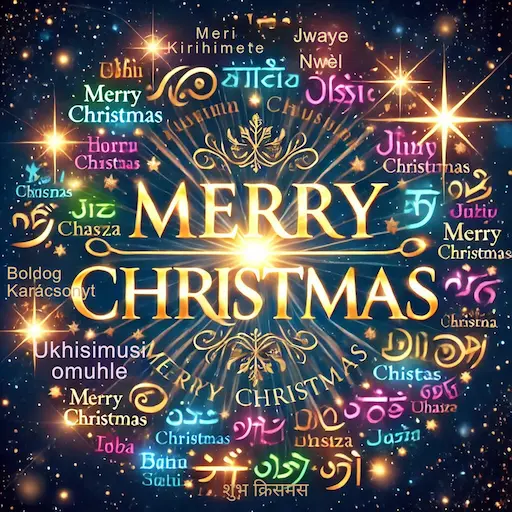
Exploring the Spirit of Christmas Through Over 100 Greetings
During the holiday season, one universal truth stands out: everyone is eager to spread joy. Wishing someone “Merry Christmas” in a language they hold dear adds a meaningful touch to the festive season.
The greetings below are more than just words – they represent a rich diversity of traditions and the warm spirits that connect us all.
Here is a list of “Merry Christmas” in 108 languages. While these greetings are commonly associated with Christmas, it’s important to note that not everyone celebrates Christmas as a religious holiday.
However, in multicultural societies and interfaith relationships, these phrases are often shared as acts of goodwill and mutual respect:
- Afrikaans: Geseënde Kersfees
- Akan (Twi): Afehyia Pa
- Albanian: Gëzuar Krishtlindjet
- Amharic: መልካም ገና (Melkam Gena)
- Arabic: عيد ميلاد مجيد (Eid Milad Majid)
- Armenian: Շնորհավոր Սուրբ Ծնունդ (Shnorhavor Surb Tsnund)
- Assamese: শুভ বড়দিন (Shubho Borodin)
- Azerbaijani: Milad Bayramınız Mübarək
- Basque: Eguberri On
- Belarusian: Веселага Раства (Viesialaha Rastva)
- Bengali: শুভ বড়দিন (Shubho Borodin)
- Bosnian: Sretan Božić
- Bulgarian: Весела Коледа (Vesela Koleda)
- Burmese: မင်္ဂလာနှစ်သစ်ကူး (Mingalar Hnit Thit Ku)
- Catalan: Bon Nadal
- Cebuano: Maayong Pasko
- Chichewa: Khrisimasi yabwino
- Chinese (Mandarin): 圣诞快乐 (Shèngdàn Kuàilè)
- Chinese (Cantonese): 聖誕快樂 (Seng Dan Faai Lok)
- Croatian: Sretan Božić
- Czech: Veselé Vánoce
- Danish: Glædelig Jul
- Dutch: Vrolijk Kerstfeest
- Dzongkha (Bhutanese): བཀྲ་ཤིས་དུས་བཞུགས་དགའ་པོ་ (Trashiy Delek)
- Esperanto: Feliĉan Kristnaskon
- Estonian: Häid Jõule
- Filipino: Maligayang Pasko
- Finnish: Hyvää Joulua
- French: Joyeux Noël
- Frisian: Lokwinske mei Kryst
- Galician: Bo Nadal
- Georgian: შობა ახლის (Shoba Akhalis)
- German: Frohe Weihnachten
- Greek: Καλά Χριστούγεννα (Kala Christougenna)
- Gujarati: મેરા ક્રિસમસ (Mera Krisamas)
- Haitian Creole: Jwaye Nwèl
- Hausa: Barka da Kirsimeti
- Hawaiian: Mele Kalikimaka
- Hebrew: חג מולד שמח (Chag Molad Sameach)
- Hindi: शुभ क्रिसमस (Shubh Christmas)
- Hmong: Zoo siab hnub Christmas
- Hungarian: Boldog Karácsonyt
- Icelandic: Gleðileg Jól
- Igbo: Ezi Krismas
- Indonesian: Selamat Natal
- Irish: Nollaig Shona Duit
- Italian: Buon Natale
- Japanese: メリークリスマス (Merī Kurisumasu)
- Javanese: Sugeng Natal
- Kannada: ಮೆರಿ ಕ್ರಿಸ್ಮಸ್ (Meri Krismas)
- Kazakh: Рождество құтты болсын (Rozhdestvo Kuttı Bolsın)
- Khmer: សួស្តីបុណ្យណូអែល (Sousdei Bon Noel)
- Kinyarwanda: Noheli Nziza
- Korean: 메리 크리스마스 (Meri Keuriseumaseu)
- Kurdish: Sersala we pîroz be
- Kyrgyz: Рождество майрамы менен (Rozhdestvo Mayramy Menen)
- Lao: ສຸຂສັນວັນຄຣິດສະມາດ (Suksan Wan Khritsamat)
- Latin: Felix Dies Nativitatis
- Latvian: Priecīgus Ziemassvētkus
- Lithuanian: Linksmų Kalėdų
- Luxembourgish: Schéi Chrëschtdeeg
- Macedonian: Среќен Божиќ (Sreken Bozhik)
- Malagasy: Mirary Krismasy Sambatra
- Malay: Selamat Hari Natal
- Malayalam: മേരീ ക്രിസ്മസ് (Merry Krismas)
- Maltese: Il-Milied It-Tajjeb
- Maori: Meri Kirihimete
- Marathi: मेरी क्रिसमस (Meri Krismas)
- Mongolian: Зул сарын баярын мэнд хүргэе (Zul Saryn Bayaryn Mend Hurgeye)
- Nepali: मङ्गलमय क्रिसमस (Mangalamaaya Christmas)
- Norwegian: God Jul
- Odia: ମେରି କ୍ରିସମସ (Meri Krismas)
- Pashto: د کرسمس مبارکۍ (Da Kresmas Mubarakai)
- Persian: کریسمس مبارک (Kerismas Mobarak)
- Polish: Wesołych Świąt
- Portuguese: Feliz Natal
- Punjabi: ਮੇਰੀ ਕ੍ਰਿਸਮਸ (Meri Christmas)
- Quechua: Felis Navidad
- Romanian: Crăciun Fericit
- Russian: С Рождеством (S Rozhdestvom)
- Samoan: Manuia le Kerisimasi
- Scots Gaelic: Nollaig Chridheil
- Serbian: Срећан Божић (Srećan Božić)
- Shona: Krisimasi yakanaka
- Sinhala: සුබ නත්තලක් වේවා (Suba Naththalak Weva)
- Slovak: Veselé Vianoce
- Slovenian: Vesel božič
- Somali: Kirismas wanaagsan
- Spanish: Feliz Navidad
- Sundanese: Wilujeng Natal
- Swahili: Krismasi Njema
- Swedish: God Jul
- Tagalog: Maligayang Pasko
- Tajik: Иди Милоди Масеҳ муборак (Idi Milodi Maseh Muborak)
- Tamil: மெர்ரி கிரிஸ்துமஸ் (Merry Christmas)
- Telugu: మీకు క్రిస్మస్ శుభాకాంక్షలు (Mee Ku Christmas Subhakankshalu)
- Thai: สุขสันต์วันคริสต์มาส (Suk San Wan Christmas)
- Tibetan: བཀྲ་ཤིས་དུས་བཅུགས་བདེ་ལེགས (Tashi Delek Duskyug)
- Tigrinya: መልካም ገና (Melkam Gena)
- Turkish: Mutlu Noeller
- Ukrainian: Щасливого Різдва (Shchaslyvoho Rizdva)
- Urdu: میری کرسمس (Meri Christmas)
- Uzbek: Rojdestvo bilan tabriklayman
- Vietnamese: Giáng Sinh Vui Vẻ
- Welsh: Nadolig Llawen
- Xhosa: Krismesi emnandi
- Yoruba: E ku odun keresimesi
- Zulu: Ukhisimusi omuhle
How many of these greetings did you recognize? I knew about eight before putting this list together with our kids.
It's fascinating to see the variety of ways people express holiday cheer around the world!
How Holiday Greetings Reflect Global Traditions
The way we say “Merry Christmas” is more than just words – it reflects rich cultural traditions.
Each language adds its own unique touch, showing the different ways communities celebrate the holiday spirit.
- Diverse Cultural Insights
In France, “Joyeux Noël” expresses holiday joy while also reflecting the elegance of their traditions, like grand family gatherings. - In Spanish-speaking countries, “Feliz Navidad” carries the lively spirit of parades and community feasts, showcasing their vibrant celebrations.
- Significance of Expression
In Germany, “Frohe Weihnachten” connects to centuries-old customs like Weihnachtsmärkte, or Christmas markets, known for handcrafted gifts and delicious foods, like Weihnachtsplätzchen. - Every language provides a glimpse into that culture's heart and holiday traditions.
- Unity in Variety
Although greetings differ, whether it’s “Nadolig Llawen” in Welsh or “Merii Kurisumasu” in Japanese, the values of peace, love, and joy remain the same.
Each greeting spreads goodwill and reminds us of the connections we share, no matter our differences.
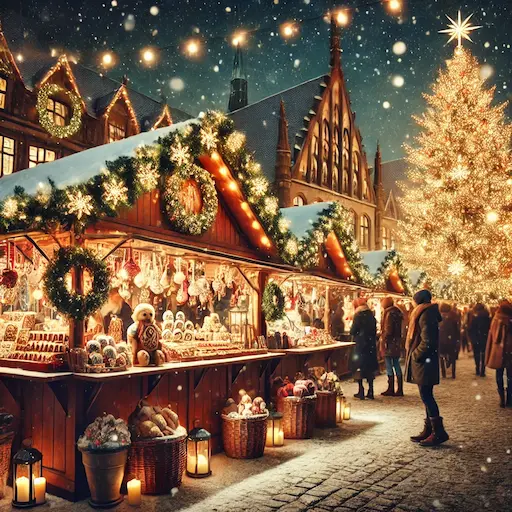
Why Learning These Greetings Brings Us Closer
Understanding and using Christmas greetings in different languages is more than just a fun activity.
It builds connections and shows empathy, reminding us that we are all part of a global community.
- Building Connection
When you greet someone in their native language, you're doing more than saying words – you’re creating a meaningful connection. You’re saying, “I see you, and I value your culture.” This simple gesture can bring joy and warmth that lasts far beyond the holiday season. - Celebrating Diversity
Our world is filled with unique languages and customs. Learning these greetings lets us step out of our everyday routines to celebrate this diversity. It’s a chance to join a global conversation about unity and togetherness. - Expanding Horizons
Imagine saying “Buon Natale” to your Italian friends or “Mutlu Noeller” to someone in Turkey. These small acts can help us appreciate different cultures and traditions. They remind us that even with our differences, shared kindness and joy bring us all together.
Passing on Multicultural Traditions During the Holidays
The holiday season is a time of unity and joy for families around the world.
It’s an opportunity to celebrate our own heritage while appreciating the rich diversity of cultures around us.
Sharing traditions and greetings from different backgrounds turns a simple “Merry Christmas” into a meaningful recognition of the vibrant mix of customs and languages that make up our global community.
Making Language a Family Tradition
Imagine your family learning to say “Merry Christmas” in new languages yearly.
Starting this tradition can make the holiday season more exciting and meaningful.
We all love the presents under the Christmas tree, but adding this creates an opportunity to connect with the world’s many cultures, making the celebrations even richer and more memorable.
- Choose a Language Together
Have everyone in the family suggest a language they’d like to learn. Make a list and vote on which greeting to try for the year. - Practice as a Family
Turn learning into a game. Practice saying the greeting together and see who remembers the most by Christmas Day. - Create Holiday Cards
Make handmade cards featuring your chosen greeting to send to friends and family. Share your new tradition and spread the joy.
By adding different languages to your holiday traditions, you’re doing more than learning words – you’re starting conversations about culture and diversity, bringing your family closer to the world.

Bringing the Joy of Diversity to Your Community
Why stop at home? Spread joy and understanding in your community by using multilingual greetings during holiday events. This simple act can bridge cultural gaps and bring people closer together.
- Host a Multilingual Caroling Event
Organize a caroling group that sings traditional holiday songs in multiple languages. It’s a festive way to celebrate cultural diversity and include everyone in the holiday spirit. - Share Diverse Holiday Greetings
Create community newsletters, flyers, or cards that wish residents “Merry Christmas” in various languages. It’s an easy and thoughtful way to educate and connect with neighbors from different backgrounds. - Celebrate with a Cultural Exchange Day
Host a potluck and invite friends from different cultures. Encourage everyone to greet each other using newly learned multilingual phrases, creating a welcoming and joyful atmosphere.
A Personal Tradition: Sharing the Spirit of Epiphany
Bringing multilingual traditions into holiday celebrations adds warmth and diversity, extending the spirit of the season beyond our homes and into our communities.
Growing up in Germany, I have fond memories of Heilige Drei Könige (Epiphany) on January 6th with my Catholic church. We would go door to door, singing Christmas songs and writing C+M+B along with the new year above door frames in chalk.
For obvious reasons, I was always the best fit to play Balthasar, a role I fully embraced every year.
This marking is often thought to represent the names of the three kings – Caspar, Melchior, and Balthasar.
But more commonly, it stands for the Latin phrase Christus Mansionem Benedicat, which means “Christ bless this house.”
This tradition of chalking doors is an old custom meant to protect homes and bring blessings for the year ahead.
Epiphany, or “Three Kings Day,” celebrates the story of the three wise men visiting Jesus.
Families and communities come together on this special day to remember their journey and worship.
While Epiphany is deeply rooted in the Catholic faith and celebrated by other Christian traditions, it holds a special place in our family.
Even though I no longer actively practice the Catholic faith, I love sharing this tradition with my kids as a part of our heritage and the holiday season.
Reflecting on the Real Reason for the Season
As the festive season begins, one theme connects every celebration: the joy of giving, loving, being at peace, and holding on to hope.
These values are at the heart of Christmas and serve as an important reminder, especially during this time of year.
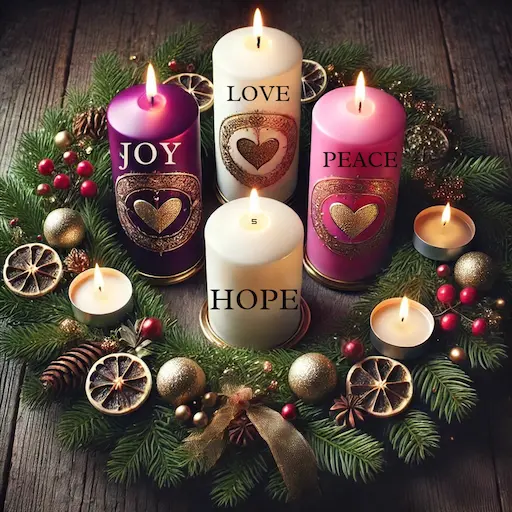
Hope, Peace, Joy, and Love Through Advent
In Germany and many other countries, Advent marks a time of preparation for Christmas, focusing on hope, peace, joy, and love.
Advent, which means “coming” in Latin, begins four Sundays before Christmas and helps Christians reflect on these values as they prepare to celebrate Jesus’ birth.
Long before Jesus was born, people waited for a Savior, longing for light in their darkness. His coming symbolizes Christ as the “light of the world,” bringing light to remove the darkness of sin.
This light spreads hope and guidance to those seeking peace in an uncertain world.
Prophets like Isaiah foretold Jesus’ coming, promising hope for the future. On Christmas, Jesus fulfilled that promise, bringing not only hope but also peace, joy, and love to the world.
During Advent, we create an Adventskranz (Advent wreath), reflect on how these themes shape our lives today, and prepare our hearts to celebrate His presence now and His coming again.
Love
Advent reminds us to share love with others. Families gather, neighbors connect, and strangers are shown kindness.
Love is seen in simple acts, such as sharing a meal, offering encouragement, or simply being present. These moments bring people closer and make the season truly special.
Joy
Advent fills hearts with joy as we look forward to Christmas Day. From lighting candles to singing carols, joy is in the little things that bring us together.
This joy doesn’t rely on extravagant celebrations but flourishes in everyday moments, like a child’s laughter or a heartfelt conversation.
Peace
Amid the busy holiday season, Advent invites us to pause and seek peace. It’s a time to let go of grudges, forgive past mistakes, and offer reconciliation.
Peace creates a space where relationships deepen, and hearts feel at rest, echoing the message of Christmas.
Hope
Advent is a season of hope, reminding us of the promises fulfilled through Jesus’ birth and the promises yet to come.
It inspires us to look forward with trust and optimism, even during challenging times.
The hope of Advent lights the way as we prepare our hearts for the celebration of Christmas.
Sharing the Spirit of Christmas in a Multicultural World
We live in a world filled with diverse cultures. Sharing the joy of Christmas can be as simple as learning to say “Merry Christmas” in different languages.
This small gesture can remind us of our shared humanity.
- Spread Warmth in Greetings
Try saying “Ezi Krismasi” to your Igbo friends or “Manuia le Kerisimasi” to someone from Samoa. A greeting in someone’s native language often feels like a heartfelt gift. It shows respect and curiosity about their culture and traditions. - Make a List
Create a list of languages you’d like to learn a Christmas greeting in. Turn it into a fun family activity. Use a map to connect each greeting to its country, adding a little geography to the holiday spirit. - Celebrate Diversity
At neighborhood gatherings, encourage people to share Christmas greetings in their native languages. It’s an easy way to appreciate cultural richness and bring everyone together in the holiday spirit.
The magic of Christmas is in its ability to unite us across cultures and traditions.
By sharing joy through diverse greetings, we can make the season even more meaningful and memorable.

Embracing Unity Through Diversity This Christmas
The holiday season brings together many cultures and traditions, each adding something special to the celebration.
Christmas is a time for joy and sharing, and these values grow stronger when we embrace diversity.
By recognizing and celebrating different customs, families and communities can come together to make this time of year even more meaningful.
Discovering Different Festivities
Christmas is celebrated in magical ways across the globe, with each community adding its own unique flavor to the festivities. Here are a few customs that highlight the diversity we cherish:
- France’s Noël: Families come together for feasts and special markets filled with handmade gifts.
- Mexico’s Posadas: This event reenacts Mary and Joseph’s search for shelter, followed by a community-wide celebration.
- India’s Midnight Mass: People attend services and then enjoy meals together, blending local cuisine with traditional Christmas dishes.
- St. Nikolaus Day: Celebrated on December 6th in countries like Germany and Austria, children leave their shoes out the night before to be filled with small gifts and treats by St. Nikolaus, honoring the spirit of generosity and kindness.
When I tell people I’m traveling to Ghana around Christmas, I often hear, “So you’re going for Detty December?”
Detty December is a lively festive period in Ghana and Nigeria that runs from mid-December through the New Year, filled with parties, concerts, and celebrations.
While this modern association is widely recognized, Christmas traditions in Africa go much deeper.
December is also a time rooted in faith and family, with church services and communal meals at the heart of celebrations.
This blend of joyful festivities and traditions shows how the holiday season in this part of the world is both vibrant and reflective.
These customs remind us that while practices may differ, the essence of love and togetherness remains universal.
What are your favorite holiday traditions? Share them in the comments below—I’d love to hear how you celebrate this special time of year!
Sharing & Learning Together
Why not include a new tradition from another culture in your celebrations? Here are some simple ways to make this happen:
- Learn a Greeting: Wish your friends and neighbors “Merry Christmas” in different languages.
- Cook Traditional Dishes: Try preparing a Christmas dish from another country and enjoy it with your family.
- Join Community Celebrations: Take part in multicultural events to experience diverse Christmas traditions firsthand.
These small gestures create meaningful connections and add depth to our shared celebration of the season.
Celebrating Together
In our diverse communities, we have the chance to create shared experiences that bring everyone closer.
This could be as simple as hosting a neighborhood gathering where traditions are shared:
- Group Cooking: Invite neighbors to cook together, with each family sharing a recipe from their culture.
- Cultural Storytelling: Set aside time for families to share stories or fables they traditionally enjoy during Christmas.
- Decorate Together: Add a multicultural touch to your decorations by including symbols and styles from different countries.
By celebrating these diverse customs, we discover new ways to connect and build a sense of community during the holiday season.
This unity in diversity is the true magic of Christmas, reminding us that no matter how different our traditions may be, we are all part of one shared celebration.
I especially love this because I have a German friend in my neighborhood, and together, we’ve created a tradition of learning from each other with our kids.
We meet up to bake and craft, sharing pieces of our cultures along the way.
These moments are a wonderful reminder of the joy and connection that come from embracing and celebrating our differences.
Christmas is a time to celebrate our shared humanity, connecting hearts across cultures with joy, peace, hope and love.
Christmas is a time for joy and connection. Saying “Merry Christmas” in different languages helps us share this joy across cultures.
Learning these greetings adds a personal touch, showing respect for others' traditions.
This season, try using a new Christmas greeting—it’s a simple way to make someone feel valued and appreciated. Which new greeting will you try this year?
IF THIS POST RESONATES WITH YOU, CONSIDER EXPLORING MORE OF OUR WEBSITE AND PINNING ONE OF THE IMAGES BELOW!
Thank you for your support.


